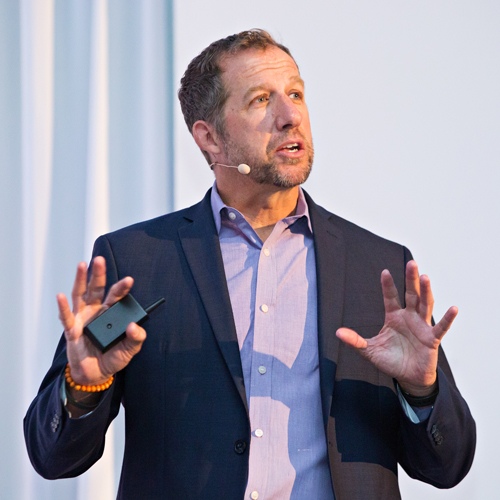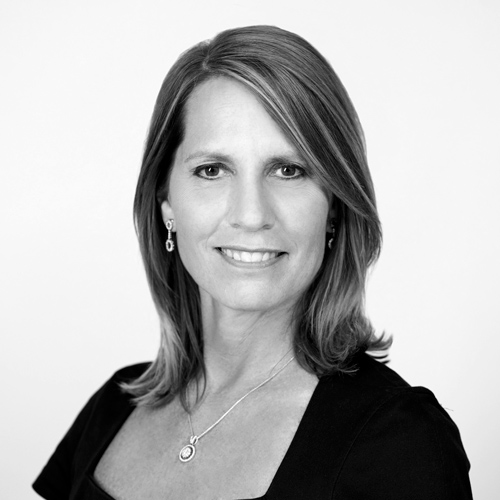It happens in nearly every office. Employees clip out newsworthy articles and pass them around from desk to desk to be read—or sometimes ignored—and passed on. In 2017, this might happen via email more often than by paper, but in July of 1994, one such article, about SAP, a company that was new to the United States, made the rounds of the Philadelphia law office of Ratner & Prestia. When it landed on the desk of attorney Tony DiBartolomeo, it intrigued him. As a young lawyer at this boutique IP law firm, he was always searching for new business opportunities. “I looked at the article and just called and asked for the legal department,” he says.
That cold-call changed his life. Now, as senior vice president and chief IP officer at SAP, DiBartolomeo has done his part as the German software company with a US headquarters in Newtown Square, Pennsylvania, grew from a relatively small firm to a global market leader in enterprise application software and services, supporting nearly 300,000 customers in 190 countries.
“I wanted us to be the very first company to use this new mechanism because it would be adjudicated on a first-in, first-out basis. So we had it filed on midnight of the night it became available.”
When the company hired DiBartolomeo as its first patent attorney in 1997, his first major challenge was the fact that SAP was German. “The patent program had a rough start,” he says. “From the German perspective, software was not patentable.” Although he was able to initiate a program, he ultimately convinced the executives in the United States and Germany to add professionals in Germany to help take it to the next level. Shortly thereafter, he took another position as assistant general counsel for SAP Markets, a SAP start-up focused on public and private electronic marketplaces. When the company formed a global IP group in 2001, he returned to the IP domain. And the company named him chief operating officer of the group in 2004. He then had to create and lead the official IP litigation function in 2006.
During that time, DiBartolomeo steered SAP through the two largest IP infringement litigations in its history. In March 2007, Oracle sued SAP for copyright infringement, among other things. A month later, Versata sued the company for patent infringement. “In the beginning of these cases, we only had four people in the IP litigation team,” he says. “We had to leverage the available resources across many other legal and nonlegal functions.”
The Oracle case initially seemed disastrous for SAP. “After the trial in the Oracle case, the jury returned the largest ever damages award for copyright infringement in US history,” DiBartolomeo says. “Working closely with JonesDay, however, we convinced our judge to vacate the damages award and the case ultimately settled.”
The Versata case went through a variety of twists and turns. But it ultimately hinged on a newly minted statute that allowed the defendant, SAP, to challenge and invalidate the patent it was accused of infringing. “I wanted us to be the very first company to use this new mechanism because it would be adjudicated on a first-in, first-out basis,” DiBartolomeo says. “So we had it filed on midnight of the night it became available.”
But because the mechanism was so new and unfamiliar to the US Patent and Trademark Office (USPTO), the firm didn’t receive an electronic confirmation of receipt, and DiBartolomeo and his legal team had an associate drive to the USPTO and deliver it by hand at three in the morning. That legal maneuver invalidated the patent. And though the case was still settled, the move ended up being extremely helpful to its resolution. “We were all very proud of being the first to use this mechanism,” he says.
In 2012, the company named DiBartolomeo chief IP officer. He now oversees six direct reports and sixty-some staff members who handle a wide variety of functions including patents, trademarks, strategy, litigation, public policy, and operations. He sees his primary mission as bringing these diverse groups together into a cohesive unit. “It is critical that all these functions work together,” he says. “Silos, as we all know, aren’t very efficient. And they don’t create a culture that gets the most out of people.”
Creating cohesion wasn’t easy. “At first, we didn’t have that atmosphere, so I made some changes to create a different dynamic that would allow me to get the most of my team,” he says.
At one particular leadership training, for example, he learned about the multiplier-
diminisher philosophy. “You want to multiply what people can do to release their full potential,” he says. “We empower our people and let them take chances; they’re highly skilled professionals. We hold them accountable, but they know we have their back and support them. That is the atmosphere in our group and throughout most of SAP. The results have been amazing. When everyone operates like a team, supporting everyone else and helping their colleagues be successful, that makes a huge difference.”
DiBartolomeo’s passion lies in working with the business side of the company. “It’s about accomplishing things, using the law to drive and preserve your market opportunities,” he says. “It’s that interplay that I really enjoy.”
DiBartolomeo knows that he has been lucky in his career. And he counts that old newspaper clipping as part of his luck. “Most of the individuals that I’ve reported to have been incredible and, frankly, have become close friends, and I want to give that back to the people in my group,” he says. “I absolutely love working at SAP.”














